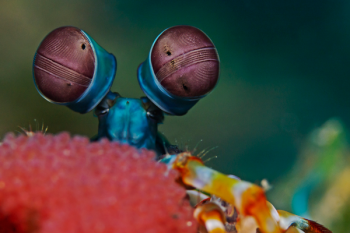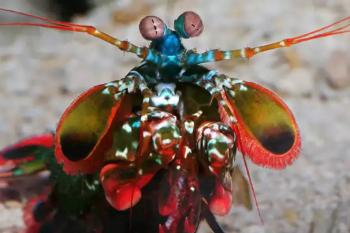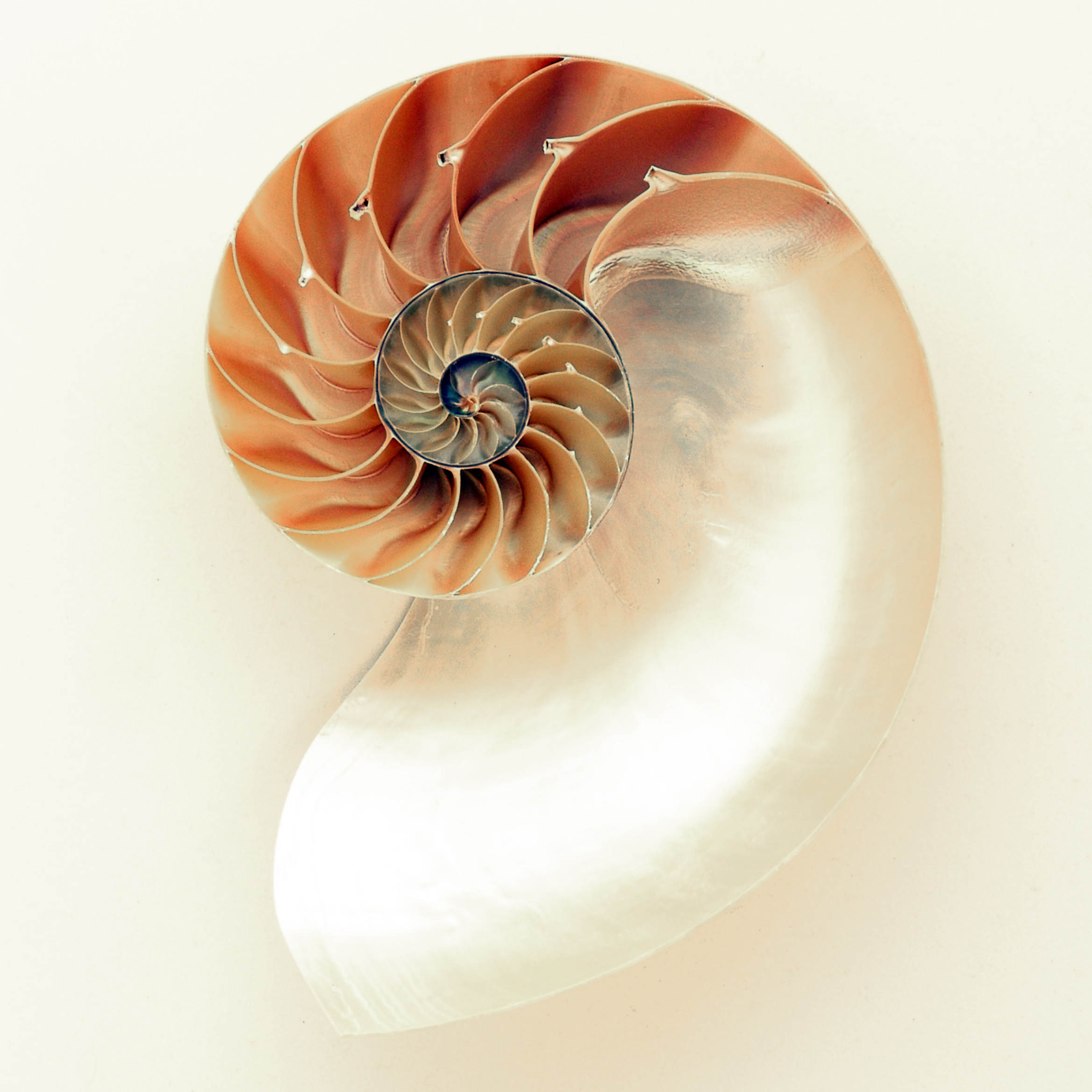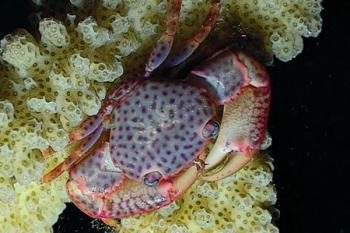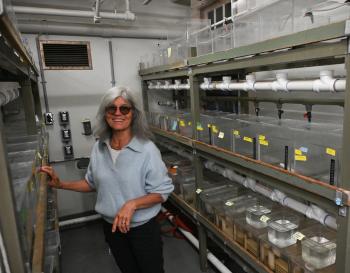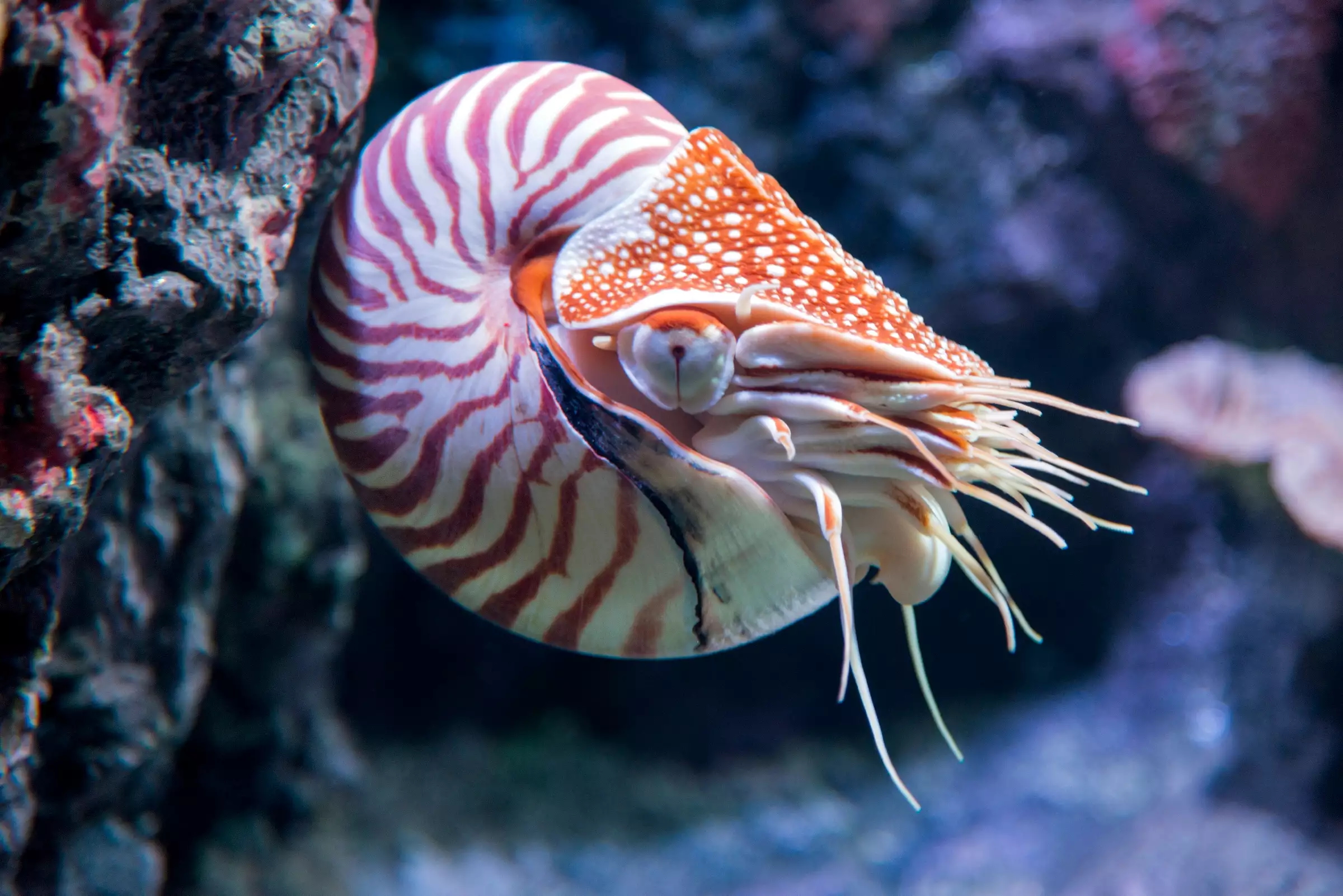
Almost everyone is familiar with the shape and design of a chambered nautilus. But most people don’t know that nautiluses are cephalopods. In fact they’re very ancient cephalopods – so ancient that they’re often called living fossils. Their ancestors were extinct nautiloids that lived around 480 million years ago, along with other cephalopod ancestors. Their body plan has been around a very long time: see this animation. The nautilus is the only living cephalopod with an external shell.
The chambered nautiluses are limited by both their narrow depth habitat and temperature range. Scientists think that the species only occurs in small, isolated populations throughout its range During the day nautiluses remain as deep as 2,200 feet (700 m). At night, they migrate up to shallower depths of about 230 feet (70 m) to feed.
Groovy Nautiluses
Like all cephalopods, nautiluses have beaks and radulas to break and shred food. Using these sharp tools nautiluses can prey on crustaceans, like shrimp and crabs; they also scavenge on dead animals. They use their keen sense of smell to hunt; their pinhole eyes can only sense light and dark. And a nautilus uses its 90 tentacles — the most of any cephalopod — to feel along the rocks and reefs for food. Its tentacles have grooves and ridges instead of suckers like octopuses. Covered with a sticky secretion, the grooves and ridges carry food and pass it to the nautilus’ mouth. Nautiluses have multiple predators, including sharks, bony fish and octopuses.
As its name indicates, inside a nautilus shell there are many chambers, which the animal uses to regulate buoyancy as it moves up and down in the ocean. It’s a very old design: one of the other ancient cephalopods, the ammonites, had chambered shells that they used for buoyancy. To control its buoyancy, a nautilus pumps fluids in and out its shell chambers, which are connected by a tube called a siphuncle. Watch a nautilus regulate its buoyancy.
Life in the Fast Lane
Like its cephalopod cousins, nautiluses use jet propulsion to move. They use their siphon to expel water, and depending on the direction of the siphon, the nautilus can move forward, backwards or sideways. And scientists have found that their jet propulsion makes them very efficient swimmers.
The chambered nautilus is a “highly vulnerable species because of its life history characteristics, including low reproductive rates, slow growth, and late maturity.” It takes 5-10 years to reach sexual maturity. After mating, the female lays several eggs covered with a protective membrane, one at a time. This is very different than octopus and squid that lay masses of eggs. The female attaches each egg to a hard surface where it stays for 9-12 months until hatching as a 1.2 inch (3 cm) hatchling.
The main threat to the chambered nautilus is the ornamental shell trade.
Watch our Featured Scientist Peter Ward observe the chambered nautilus in the wild. And hear the excitement of the scientists on the research vessel EV Nautilus when they see and film a nautilus just above the seafloor.
